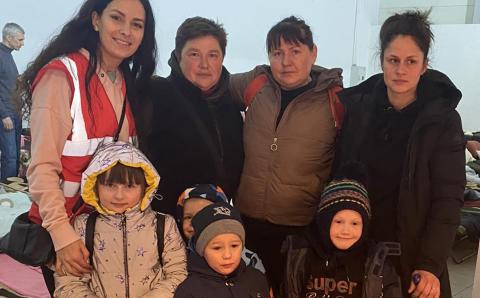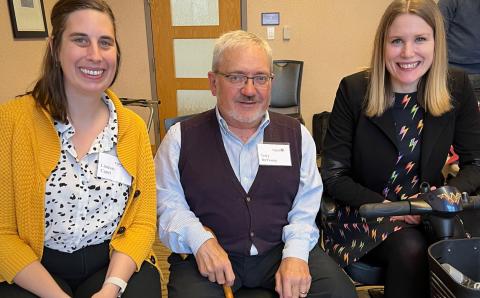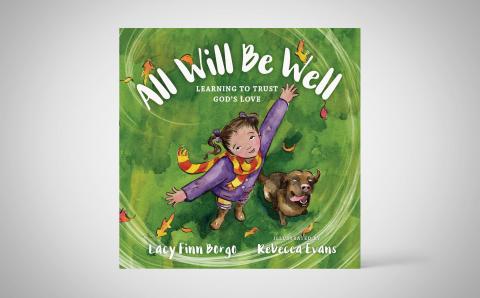Many of us grew up in multigenerational churches. Churches not only had children, teens, parents, and grandparents sitting in the same sanctuary, but had programming for each of them: church school for kids, youth group for teens, and Bible studies for adults. This model for church was adapted from schools, where children and teens are separated by age.
Fewer churches, however, are intergenerational. Intergenerational churches are those that are intentional about bringing different generations together in a mutual, influential relationship so that they can achieve common goals. The key words are intentional and mutual. Those differences seem subtle, but they are important.
In their book Intergenerational Christian Formation, Holly Allen and Christine Ross point to several reasons why striving for an intergenerational community is worth the effort. The first is a sense of belonging. They write, “Intergenerational faith communities provide experiences that foster (a) deep sense of belonging in children, teens, and adults; all feel welcome and received.” When we look around on a Sunday morning, we see people of all ages who expect us to be there and miss us when we’re not.
Intergenerational congregations also can provide support for families or people who need additional help. When a church is intergenerational, the concept of a family beyond the nuclear family is expanded. The community is already prepared to help because everyone knows all the other people, regardless of age.
This year our daughter, who had two children, gave birth to twins. Without needing to be asked, her church community brought food, offered babysitting, and even did her laundry. Now two young mothers sit with the twins in the back of church every Sunday morning, allowing our daughter and son-in-law to sit with their other children. Bringing the people of God from all ages together opens the members up to deeper relationships and to experience the different ways God has been faithful in the lives of God’s people.
We need a deep community in which we know each other. In her chapter in Cory Seibel’s book Engage All Generations, Tammy Tolman describes intergenerational ministry as creating spaces where generations collide. With more opportunities for this collision, people get to know each other well. Holly Allen expands this idea when she notes that as a child or a new believer participates in a relational community, doing “Christian” things with those further down the road in their faith, these newer members can begin to identify themselves with the Christian community.
So here, in no particular order, are our top eight signs of a church that is making strides toward being intergenerational:
• Leadership buy-in: The end goal is not for churches to do intergenerational things, but to actually become an actively intergenerational community. This shift requires that the council, pastors, and staff buy in to the value of intergenerational ministry and commit to changing the culture of the church. Unless the leadership is on board, efforts to become more intergenerational will be short-lived.
• People of all ages involved in leading worship: Activities could include Bible reading, offering prayers, leading music, or running the sound and video technology. These opportunities reinforce belonging to a community that uses people’s gifts. Research has shown that leading in worship is one of the indicators that kids will continue to be involved in churches as they grow older.
• Multi-age conversations: Look at who is talking. Are adults and kids talking to each other before and after worship? Debra Reinstra wrote that “teenagers are the canaries in the coal mine of community.” Do they hang out in the same area as the adults? Do people other than their parents engage them in conversation? The teenagers are an early indicator that the community is not siloed by age.
• Community first: Service to other members of the church community comes before individual needs. People are willing to give up something so that other members of the community can flourish. Are people who are not parents of young children willing to serve in the nursery? Are seniors willing to teach Sunday school? Do congregation members attend programs where someone from their church is performing? These are all places where intergenerational community can be built.
• Accessible worship: Work to make sure the worship service speaks to all ages and situations whenever possible. There is a lot more to a worship than preaching, but sermons take a lot of the time in a typical worship service. As they’re making their sermons, preachers should recognize the different ages of people in the pews. Sermon series about marriage aimed at young adults, for example, can cause singles and seniors to feel like the only important people are married with kids. Work on using liturgical elements that children might already be familiar with, such as songs and Bible passages that children know from Sunday school.
• Church whisperers: Become a congregation that encourages parents and other adults to be “church whisperers,” a term coined by Robbie Castleman. Kids learn what worship means when they experience it and when it is explained to them. That means that sometimes parents or caregivers need to be talking to their children during worship about what is happening. People sitting in front or behind them need to be affirming about the additional noise this makes and be pleased that the next generation is learning.
• Faith storytelling for all ages: Stories told by members of your congregation will demonstrate how our lives speak to God’s faithfulness and how God has been at work in our lives. Find times and places for people to share their stories. The Faith Storytelling Toolkit (crcna.org/FaithFormation/toolkits) has a number of resources to help you help members of your community tell their stories.
• Mentoring: There are dozens of ways that mentoring can take place in a church. Older couples can mentor young married couples. Adults can mentor teens in running the church audiovisual equipment or in playing musical instruments. Teens can mentor children in building pinewood derby cars. The point is that people take care of each other and share their gifts with younger people.
Becoming an intergenerational church is a process that will not happen immediately. People can start building relationships with people of other ages simply by working on learning each other’s names. By introducing places where people of all ages collide and are encouraged to talk to each other, an intergenerational community begins to form. Soon, committees and programs will see this as a built-in value and discuss how other parts of the church can also include generations of all ages.
About the Author
Laura Keeley is a regional catalyzer in faith formation with Thrive, the ministry agency of the Christian Reformed Church. Robert Keeley is a professor emeritus of education at Calvin University. The Keeleys recently retired after 31 years as directors of children’s ministries at 14th St. CRC in Holland, Mich.









